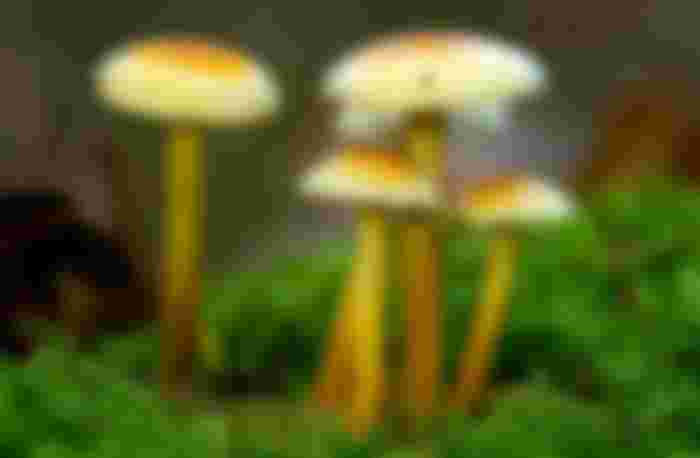Evidence is mounting that psychedelic-assisted therapies can improve well-being, in ways that are similar to mindfulness practices.

My earliest exposure to psychedelics came from growing up near the Haight Ashbury in San Francisco, well past the glory days of the Summer of Love. The Haight Street of my youth was a tourist destination for hippiesque consumerism, not a countercultural hub, though I was aware that a drug called lysergic acid diethylamide (LSD) created much tie-dye and “the best music of our time,” according to those who were allegedly there. My parents’ own Summer of Love included stories of pot and protest but no near brushes with acid, as LSD is sometimes called. At one point, my dad (an emotion researcher) was poised to study the impact of LSD on emotion—but then its ban came down in 1968, and that was that.
Fast forward some decades to 2016, to an intimate, informal, and friendly potluck made up of pioneering researchers and underground therapists who had been illicitly guiding hundreds of clients through psychedelic-assisted therapy. Surprisingly, this gathering was in my living room. A few weeks earlier, I had attended an inspiring research presentation on psilocybin therapy at the Osher Center for Integrative Medicine, where I was a postdoctoral fellow. I learned that psychedelics are a class of substances—including psilocybin, LSD, and DMT—known to initiate brief, potent effects on consciousness. Anthony Bossis, a New York University researcher, shared the results of a study with dying cancer patients. His data, though with a small group, was impressive. The patients in his study had hugely improved their quality of dying and relative well-being—and this far surpassed any other intervention tried for this group. As Bossis described, the participants were freer from anxiety and distress, and they were able to be present for loved ones and face death with peace.
I had not expected to see this kind of talk in the conservative halls of a University of California medical school. My department of integrative medicine is aggressively rigorous, including only the highest-caliber research trials on mindfulness; they are a stalwart against the woo-woo. My own research focused on meditation and emotion-regulation interventions to prevent burnout for health care workers. Bossis’s talk was so inspiring because I shared the goal of reducing stress by turning with compassion toward stress and difficulty. Bossis presented another pathway.
After the talk, I recognized a friend from graduate school and discovered he was helping organize an end-of-life study at the University of California, San Francisco, that tested psilocybin, a psychedelic substance derived from a fungus. I offered my help as a qualitative researcher, but my greatest asset at that planning stage was a large living room that could be used for meetings. We held these psychedelic research potlucks in my own and others’ homes because being associated with this research is dangerous for one’s career—one physician in our group had been pushed out of his department for suggesting a study. The therapists needed a private meeting to speak freely, because they were engaging in illegal activities by providing psychedelics to their patients outside of the research paradigm. Together, we were able to strategize and overcome governmental and institutional red tape. (There was another reason why the group needed to be invitation-only: We didn’t want to attract a group more interested in dropping acid than studying it.)
The enthusiasm among these researchers and pioneering therapists was contagious. I wondered if this was similar to what had been felt in gatherings of meditation teachers and researchers thirty years earlier. I learned a lot meeting many accomplished researchers and guides, including the coauthor of this piece, Gabrielle Agin-Liebes, who was a project manager and qualitative researcher in the New York University study with Bossis. Everyone shared a fervent desire to alleviate the suffering of their patients and clients by providing an opportunity to transcend and gain insight into the causes of this distress.
These conversations expanded the direction of my own research. I decided to embark on a study with Gabrielle. Our mission: to design, deliver, and analyze qualitative interviews with a group of long-term survivors of HIV and AIDS immediately following, and then three months after, their participation in a study using psychedelic-assisted therapy. We’re discovering from this study (and many others) that psychedelics can dramatically improve quality of life and reduce existential distress and depression. We’re more and more convinced that we need to consider testing psychedelics in other domains—and explore how they might interact with mindfulness practices.

I have heard that DMT is mind blowing experience, never tried it though.